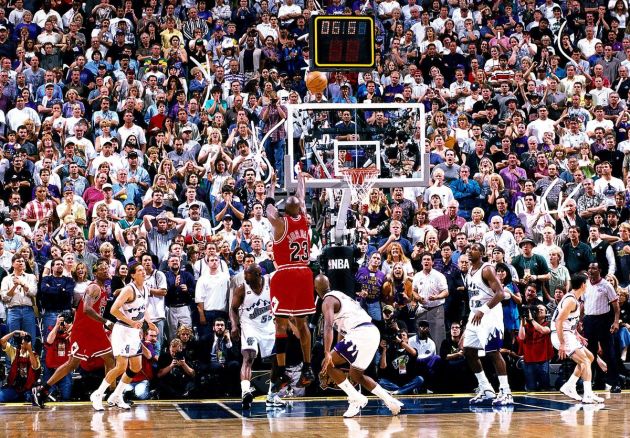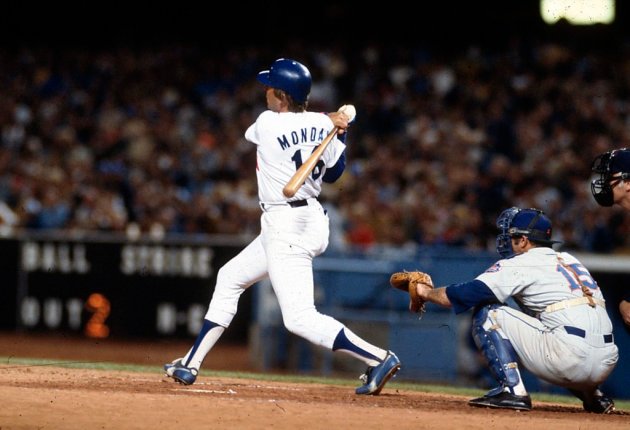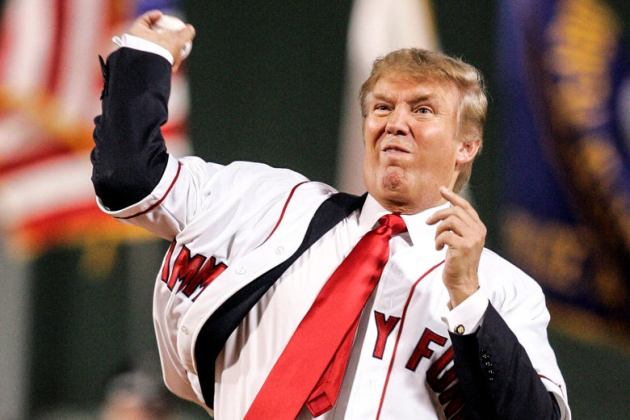Andre Dawson Is A Mortician?
Yes. Hall of Fame baseball player Andre Dawson is a mortician. Crazy, right? Read this wonderful story from Peter Keating, and you’ll learn that it makes sense. The work, what it requires, fits perfectly in line with how Dawson approached his baseball career.

He happened upon the mortuary business as a member of an investment group. 12 years ago, there was an opportunity for him to purchase a funeral parlor that was often used by members of the church Dawson attended. It didn’t take long for Dawson to realize the investment required more than money.
“Do I keep [the funeral home]? Do I sell it? Does the community really need it?” Dawson asked himself. Meeting with local pastors convinced him the answer to the last question was yes — churches worried about losing services from a partner they had relied on for more than two decades. Dawson began to sense that he personally needed to reopen its doors.
So he got involved. He learned what it took to be good at this next career. Now, Dawson refers to it as “my calling.”
But Dawson didn’t go out of his way to seek publicity. He rebranded the funeral home as Paradise Memorial rather than using his own name, and he doesn’t speak at most services. It’s Vanessa, outgoing enough that she once considered a career in broadcast journalism, who makes funeral arrangements with most visiting families. Her husband threw himself into all the less visible of aspects of their work. Dawson retrieved corpses from deathbeds. He drove a hearse. (On his first trip, he found himself reassuring the body inside the casket that he would try to keep the ride smooth.) He delivered cadavers to cremations.
“The funeral home business is not about volume,” Brown says. “It’s about controlling the quality of what you do and making it rewarding for the families that come to you and the people who work for you. Andre seems to have found enjoyment in that. Strangest thing!”
Maybe not so strange. Determined, studious and willing to deal with pain, Andre Dawson turns out to be who his fans always thought he was.
Now, as the death tolls rise from COVID-19, and as every element of a wake or viewing changes, Dawson and his team carry on. As he told his staff early on, “It’s not about me, it’s not about you, it’s about the service being rendered to this community,” he told his employees.
No wonder Dawson was the kind of teammate the other fellas named their kids after. Great story. – PAL
Source: “The Baseball Hall of Famer Who Runs a Funeral Home: Andre Dawson’s Second Act”, Peter Keating, ESPN (05/28/20)
Do Not Fall For the Owners’ Bullshit
We discussed this in the abstract a couple weeks back, but this week the MLB owners went even beyond what I would have imagined in their public negotiations with the players union regarding how the finances will work in an abbreviated 2020 baseball season.
To quickly recap: When the start of the season was postponed, the players graciously agreed to prorate their salaries according to how many games are played. In an 81-game season, that’s a 50% pay cut for all players. I say graciously because they did so with almost no push-back, assuming (perhaps stupidly) that they would accept this entirely fair position and not receive any pushback from the owners. LOLLLLL.
In the last few weeks, the owners floated through trusted media channels that they’d need more of a give back from players due to the fact fans would not be permitted in the stadium. The players said they’d need to see the owners’ books, for the first time ever, to understand if things were as dire as the owners claim. Owners claim they rarely make large profits as is, and that the lack of ticket sales and concessions would be ruinous (When considering the owners’ claim that they don’t make large profits in normal seasons, keep in mind the small market Kansas City Royals were sold a few months back for $1 billion. Do you think people are eager to pay $1 billion for failing businesses? Me neither).
But this week, the owners released their “proposal” and it is a truly insulting offer. Ignore the people arguing it’s an “opening” offer. Remember, they already HAD a deal. And also understand that in negotiations, if your initial offer is so outrageously one-sided, many times people will simply walk away – you are not to be taken seriously. So, without agreeing to show their books, the owners proposed pay cuts as follows:
It would be at that point I would tell the owners to either make a serious offer or we’d be walking away. That is completely ludicrous to the point that I actually think the owners might prefer to skip the season altogether, and so are making an offer they know would enfuriate the players.
But it’s worse than that. The public nature of it all suggests this was nothing more than a bad faith offer intended to get the players to balk, in an attempt to get the public on the owners’ side. As expected, and understandably so, the players were not happy. Here’s Max Scherzer, a member of the MLBPA’s 8-person executive committee with a representative response, and to see if the owners’ were successful in their PR ploy, wade into Scherzer’s replies. Here’s an example:
And another:
As I’ve said many times, though, I do not understand why people side with billionaires over millionaires. Yes, the players get paid a lot. But they will be risking their lives, and potentially be separated from their families for months, for a fraction of what they agreed to play for. Meanwhile, the owners will still collect billions with no risk, and without being separated from their families, for sitting on their butts and writing some checks.
I think the owners overplayed this hand. They have pissed off the players in a way they haven’t been pissed for 25 years, when the last labor stoppage took place. Buster Posey, of all people, tweeted an article by Roger Ehrenberg, a venture capitalist and baseball fan, discussing how awful the owners’ offer was:
The owners flopped a deal that perverts economic logic and fairness in order to win in the court of public opinion and to pressure the players to go along. Stripping things down to their essence, the proposal calls for players on the lowest end of pay scale to get their prorated pay based upon games played, while those at the highest end to get what amounts to 40% of their prorated salary (read: 20% of their annual contract value). So what you have here are the employees being asked to subsidize the owners — the equity owners- of the business during tough times. Not giving up their fair share, e.g., straight proration, but 60% of their fair share. As an investor for more than three decades, I have to say I’m impressed with the owner’s wanton disregard for fairness and the willingness to create the most hostile dynamic possible with their most valuable assets – the players – and using a sports-starved public as a battering ram to have their highly compensated employees look like selfish a**holes. I am impressed — and aghast.
Here’s what Posey said about the article:
If you know Buster, this is an incredibly surprising thing for him to say publicly. He’s practically a PR robot. As Grant Brisbee put it:
If Posey is saying something like that, the players are PISSED. As two agents put it:
“I have never seen a collective response like I’m seeing today from the players,” one agent said. “They are livid.”
Another agent said, “It’s such a shame there is so much distrust on both sides that we can’t be pragmatic adults. There’s no way MLB would think that proposal would get a favorable response from the players. It’s ‘right back at you, screw you.’ And where are we? They’re playing a pretty dangerous game of chicken.”
I get unreasonably angry at fans when they fall for the owners’ crap. Because we really shouldn’t. As Ehrenberger puts it:
Now here’s the important part: take a deep breath, divorce yourself from the sums involved and think about principle…. The owners of baseball clubs own the equity. The club and all of the cash flows associated with its operation are its assets. When someone owns equity, they’re supposed to get the benefit of an increase in asset value, and to bear the loss of a decrease in asset value. With the steady rise in TV revenues and sweetheart stadium deals, team values have generally skyrocketed. During COVID-19, there has been a short-term hit to asset value as ticket sales, ad revenues, merchandise sales, etc. have slowed to a trickle. The owners have fixed costs (like stadium leases and/or maintenance, supporting the farm system and supposedly player contracts) that need to be covered regardless of revenues, so on a cash flow basis the lack of baseball is costing them real cash. But guess what — this is what being an equity owner is — benefiting from the ups but paying for the downs. But that’s not what the owners want — they want their highly compensated employees to cushion the blow, without any return for what is an implicit financing of the owners by these players.
YES. Thank you. As I wrote a couple weeks back, the owners do NOT share in the profits (or skyrocketing values of their teams) when times are good. They should not get to share in the risk when times are uncertain. They make more than you and me, but the players are still labor. Don’t be a tool of the owners. -TOB
Source: “Re-Starting Major League Baseball: Motivation and Manipulation,” Roger Ehrenberg, Medium (05/27/2020); “MLB Proposal Made, Players Now Have Say Over Restart,” Ken Rosenthal and Evan Drellich, The Athletic (05/26/2020)
PAL: To our readers: isn’t it great when TOB threads together a topic through several articles like he does above?
The exercise of removing the sums of money is a great point on Ehrenberg’s part. The sums are a distraction. Could be wrong, but people get mad at the players because guys like Max Scherzer and Buster Posey get to live the dream a lot of us had as children, and there’s some residue of anger that their lives were able to stay on some trajectory set in a childhood dream millions shared while a lot of people began their drift towards anonymous mediocrity. That residue isn’t a lot – you don’t even notice it most of the time – but every now and again we’re reminded it’s there.
Roy Halladay’s Battle
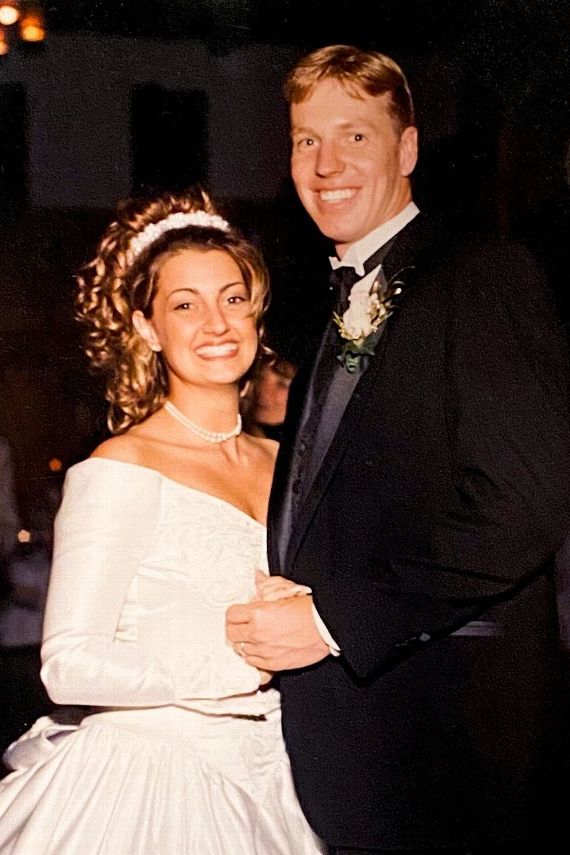
10 years ago today, Roy Halladay threw a perfect game, and that wasn’t even undoubtedly the highlight of his career. Before reading this, I forgot just how excellent Halladay was, After reading this, I learned how much trouble Halladay tried to navigate throughout his life. This story from John Barr, Mike Farrell and Brian Rivera serves as another reminder that we have no damn idea who we are rooting for and what is going on in their lives beyond the field of play.
No two ways about: this story is a sad one to unwrap, but it’s important to share stories of people who struggle, especially those who we tag, unfairly, as idols. And in that word – struggle – is also something admirable. To struggle means there’s a fight, and Halladay fought against his demons.
Please read the full story. Here are some moments that have stuck with me:
On Brandy Halladay recalling her first memories of her husband showing signs of addiction:
It started with chewing tobacco, a habit she says she hated. She’d find the partially empty tobacco tins everywhere — in toolboxes, under plants in the living room, in food boxes in the refrigerator.
Halladay, then in his early 20s, would frequently disappear, alone, into a room in the home he purchased outside of Denver to work on model airplanes or watch TV. It struck Brandy as odd that Roy would lock the door. She recalls one day finding a stack of empty Crown Royal whiskey bags inside the room.
When she confronted him, Roy explained it away, she says, by saying he relished his time alone, unwinding with a few drinks, adding he’d always had a controlled life growing up in a Mormon home and was enjoying his newfound freedom.
On Halladay’s shame of being demoted to the minors and early struggles with addiction:
By then, Roy and Brandy had their first son, 6-month-old Braden. They spoke of buying a home in Florida because Halladay was too ashamed to show his face in Colorado, she says.
That night, Brandy drove to the bookstore and bought Roy a book she now credits with saving his career and their marriage. The now-well-worn copy of “The Mental ABC’s of Pitching,” by sports psychologist Harvey Dorfman, has few highlights or handwritten notes from the pitcher, but one passage is marked with a single pen stroke in the column:
“Pitchers must have a clue,” it reads. “One must know something is breaking if he is to keep it from shattering.”
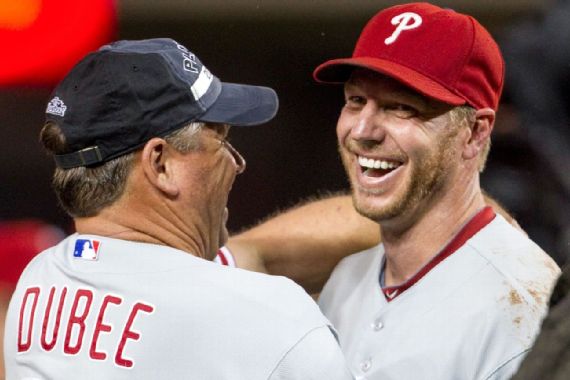
Rich Dubee, Halladay’s pitching coach in Philly, on the kind of heart the star pitcher had:
To this day, every day, Dubee wears the Baume & Mercier watch that Halladay gifted to teammates, coaches, clubhouse staffers and front-office personnel after his perfect game 10 years ago.
“We did it together,” the engraving reads on the back of each watch.
A tough read, but an important one, and one that is very well-written. -PAL
Source: “Inside Roy Halladay’s Struggle With Pain, Addiction”, John Barr, Mike Farrell and Brian Rivera, ESPN (5/27/20)
Not to Pick on MLB Owners, But…
Just kidding. As long as these rich pricks keep being rich pricks, I’ll happily pick on them. But this one is directed at a specific owner: Oakland A’s owner John Fisher (estimated net worth of $2 BILLION). This week, Fisher announced the A’s will stop paying their minor leaguers, their measly $400 weekly stipend, starting this week.
This cost saving move will save the A’s oh, about a million dollars.
https://twitter.com/legaleagle88/status/1265439924636880897?s=20
So, are those players free agents now? Are they free to sign with teams that don’t treat their players like shit? LOLLLLLLLL. No. Of course not.
This is about as disgusting as it gets, A’s. -TOB
Source: “Minor Leaguers Make $400 a Week. The A’s Are Cutting Off Payments,” Jared DIamond, Wall Street Journal (05/28/2020)
Video(s) of the Week:
I can’t decide if I’m impressed:
Tweet(s) of the Week:
Song of the Week: Bobby Womack – “Lookin’ For A Love”
Like what you’ve read? Let us know by following this blog (on the right side, up near the top), or:
Email: 123sportslist@gmail.com
We’re not supposed to PDA.
-MGS


